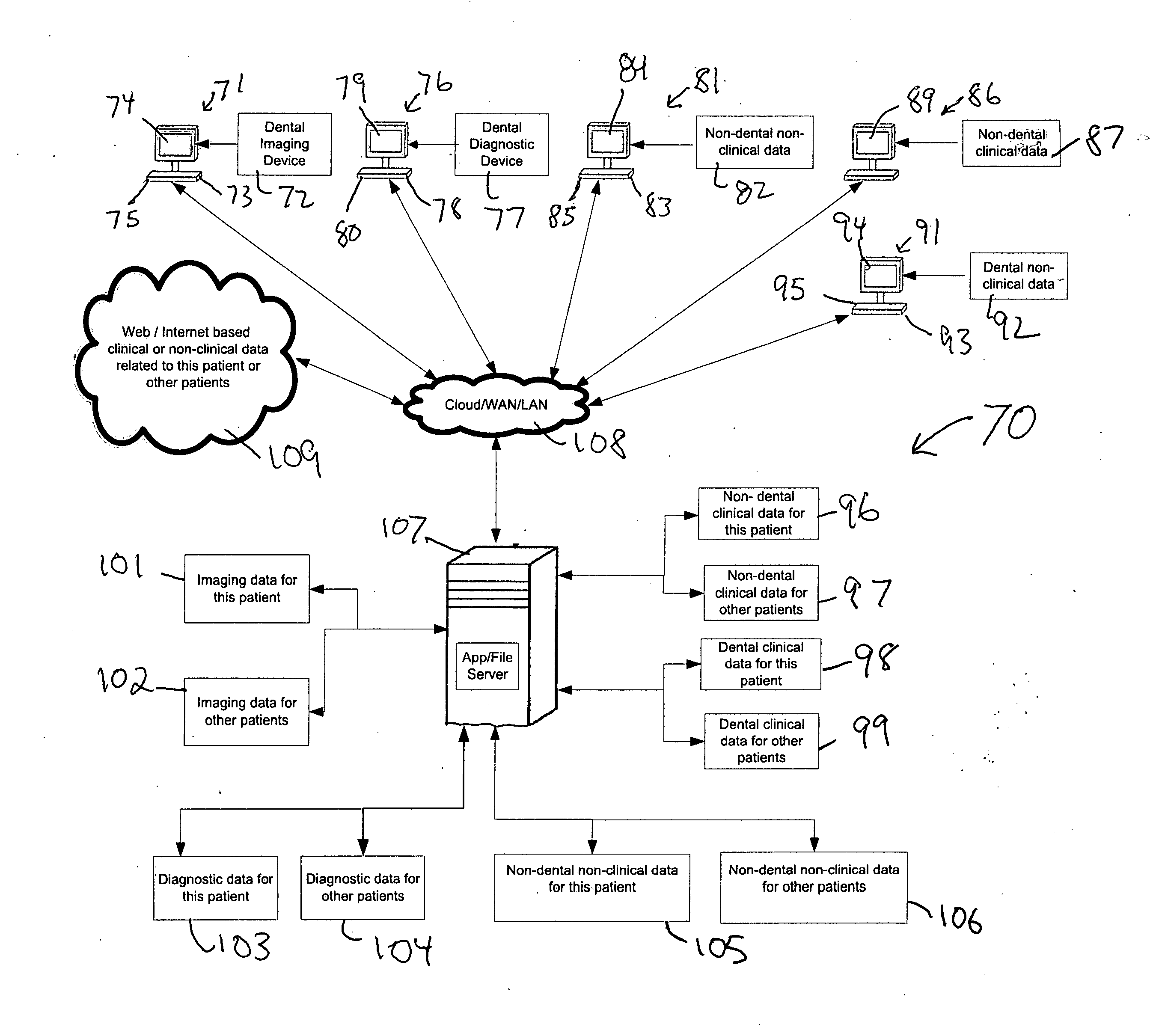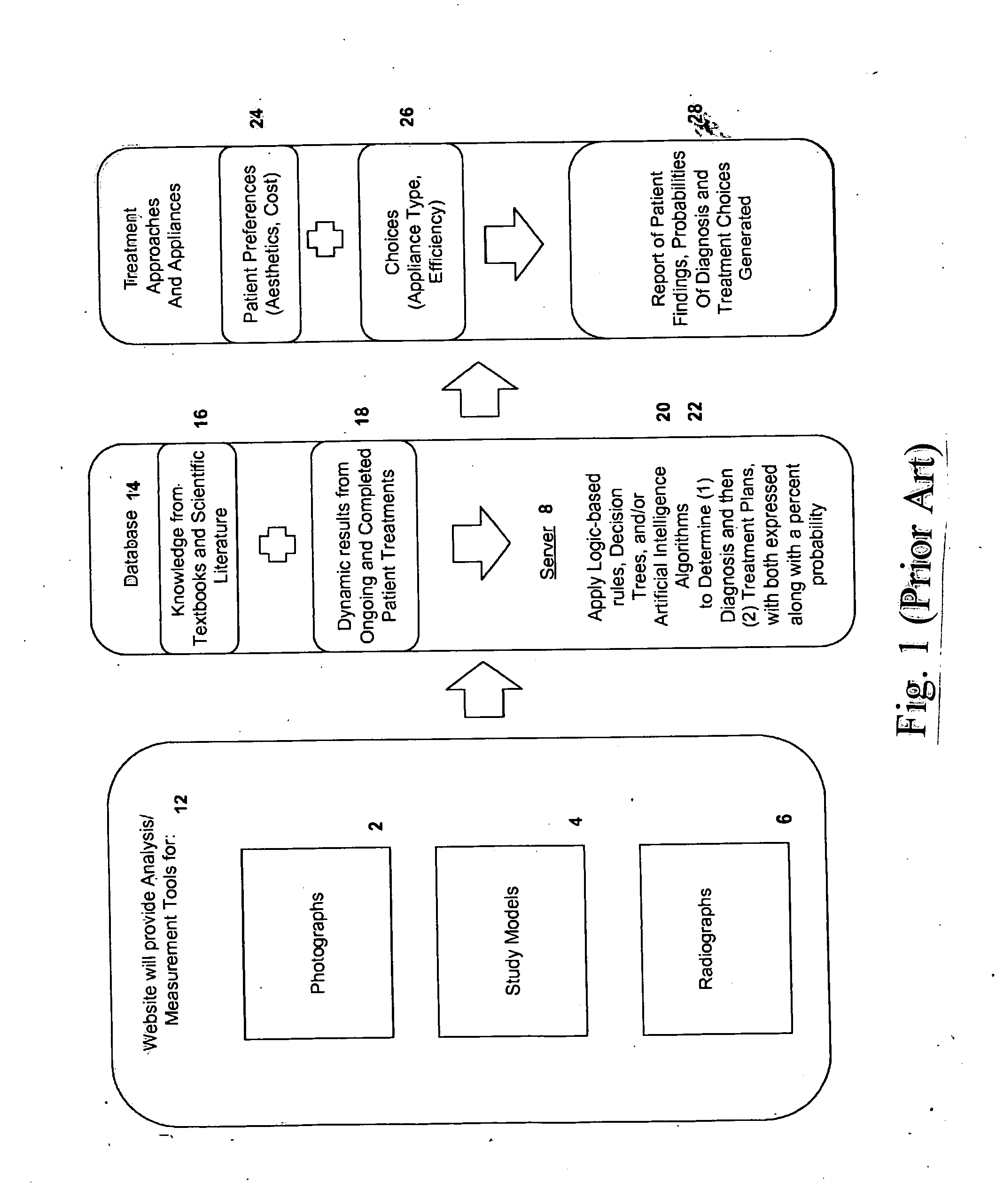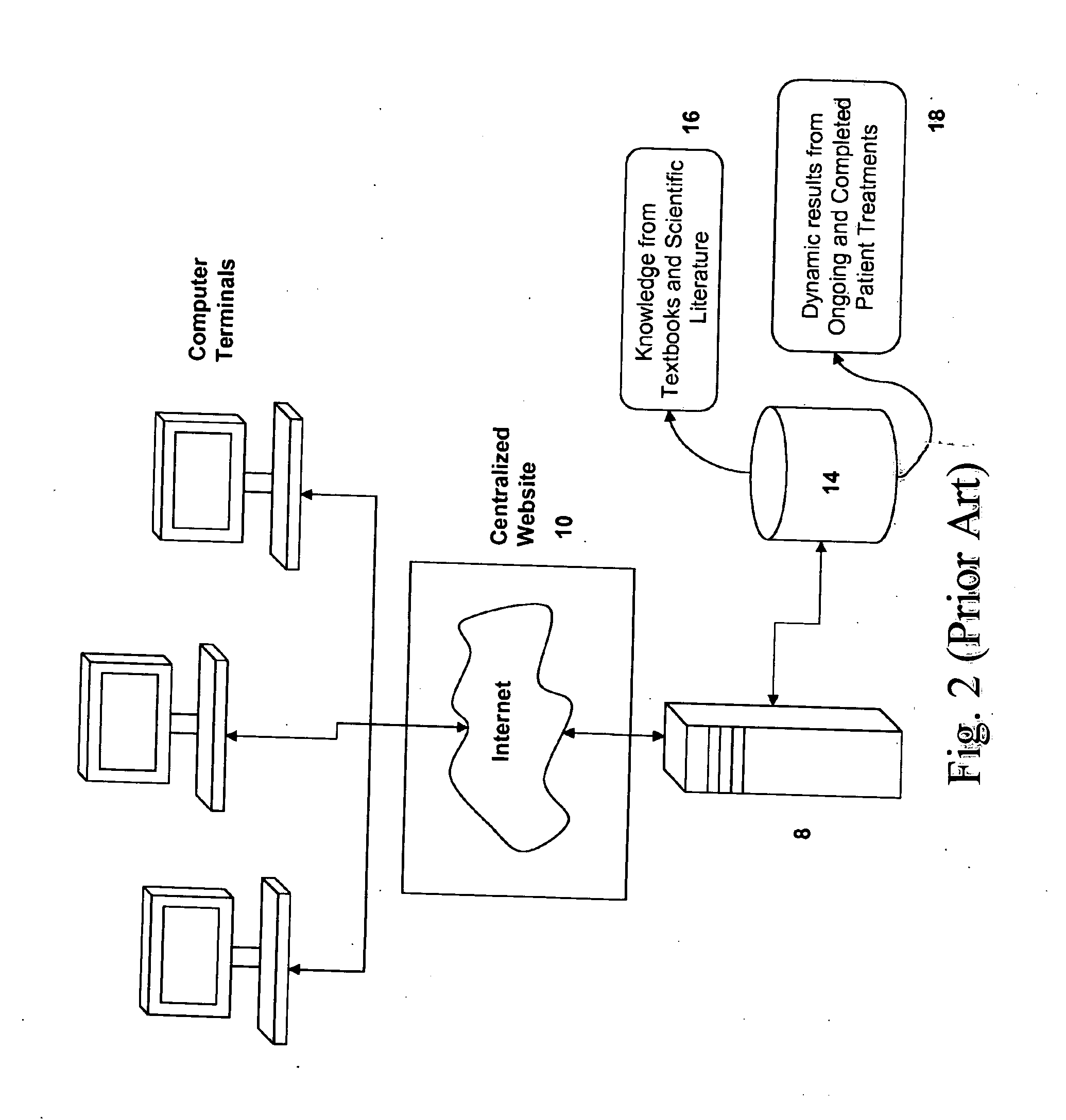As preventative and diagnostic
dentistry techniques and the physical number of
dental imaging devices continue to advance it is becoming increasingly difficult for dentists to properly screen all of the above types of images and for all of the various conditions in real-time or semi real-time when utilizing the time available during an appointment and / or during office hours.
Likewise there are many various technologies available for diagnostic and preventative procedures and most dentists do not have all the various products and technologies available in the practice for routine use and even if they did there would not exist enough time in a standard patient appointment visit to apply all of the available techniques and technologies.
Another issue is that most dentists have disparate
imaging equipment from multiple manufacturers of 2D imaging and 3D imaging systems which do not directly integrate or share images such as is often the case in the medical world with
Dicom / PACS types of systems.
When bridges exist between
practice management software and
Dicom / PACS systems or 3rd party imaging systems these systems are often too complicated for the general dentist to deploy and maintain and are still neither 100% bi-directionally integrated nor capable of sharing all image data and original image and non-image related
patient information.
Having locally installed disparate equipment and imaging
software's which save images and data locally in the dental office make it nearly impossible to use
multiple image types such as intraoral, extraoral, or cone beam images from multiple imaging devices and or using multiple non-affiliated dental practices in the analysis for detection of specific dental conditions.
These measures are tied to standards that could result in CMS penalties for poor performance.
The
delay in identifying and learning about a particular intervention often makes it impossible to rectify any situation.
It is also difficult for a hospital administrator to determine how well the hospital is meeting core measures on a daily basis.
The currently-available methods fail to include an ability to make decisions based on interpreted data, in an automated fashion.
In other words, the currently-available methods do not include an effective, accurate, and efficient “
artificial intelligence” capability, in the automated diagnosis and treatment of an orthodontic condition.
Such arrangement may be undesirable for medical, orthodontic, aesthetic, and other reasons.
A patient may filter the proposed treatments and corrective appliance results based on cost, or the relative aesthetics of an appliance.
Although selection or prioritizing alternatives from a set of available options with respect to
multiple criteria termed Multi-Criteria
Decision Making (MCDM) is an effective optimization approach, in practical applications, alternative ratings and criteria weights cannot always be precisely assessed due to unquantifiable, incomplete, and / or unobtainable information—or because of a lack of knowledge that may cause subjectiveness and vagueness in decision performance.
In addition, concepts that are relatively more difficult to learn are not easily expressed by decision trees—and, in such case, more advanced algorithms are implemented in the methods described herein.
Long term relationships and trust between a family doctor and patient are no longer commonplace because a change in
residence, job or insurance carrier often requires the patient to change primary and / or
specialty health care providers.
Establishing relationships with a new health care provider can be tedious as medical records must first be transferred from previous health care providers and then reviewed by the new health care provider for
past history, therapies, and present therapeutic regimes.
The new
medical record being created by the new health care provider is often incomplete as patients frequently fail to remember to include all the necessary medical or biographical information.
Patients sometimes convey erroneous information that can be ultimately detrimental to their health.
Control of the information contained in a patient's medical and biographical
record is also becoming a significant public issue and a source of controversy and stress.
Health care professionals from different health care providers may not be able to easily review a patient's
medical record and confer with each other as to diagnosis and treatment.
This may be due to either
security controls by the health care provider or by incompatible systems used by different health care professionals.
Medical professionals wishing to confer with each other may be required to copy and mail or send a
facsimile of the patient's
record, introducing privacy and control issues.
Current
medical systems also often do not contain useful data such as family history, biographical data, genetic constitution or make-up, or other information that a patient may add to his or her
medical record which could aid health care professionals in diagnosing the patient's condition or determine the best
medical treatment.
Moreover, presently available medical records systems are not suited for providing medical diagnoses.
While these advancements have resulted in improved success rates of
medical treatment, individuals often
delay seeking
medical attention due to fear of the unknown and the inconvenience of being referred to multiple physicians.
Further referrals may occur if the patient is referred to medical sub-specialties for further diagnosis and treatment resulting in additional patient cost, time, and inconvenience.
This
delay can cause a medical condition which could be easily treated early in its development to require longer treatment or the condition may even become untreatable by the time medical assistance is sought.
The amount of available information, however, can be overwhelming to an individual trying to determine the identification of his or her particular
health condition who is unfamiliar with researching
health information or who lacks a scientific background.
Most patients do not understand these terms and therefore cannot effectively use the programs.
The
diagnostic information provided by these programs does not inform individuals of their various conditions before they seek medical assistance.
A shortcoming of prior art automated diagnostic programs is that they can accept input data that is either often erroneous or not helpful.
Such presence often generates discomfort or uneasiness and may lead to confused, unconsciously withheld, consciously suppressed information (e.g., suppressed for fear of embarrassment) or miscommunicated medical and biographical information.
Patients may authorize or deny access to their medical and biographical records or limit access to only portions of their medical
record to specific healthcare professionals thereby controlling privacy of the patient and
confidentiality of the patient's medical and biographical information.
 Login to View More
Login to View More  Login to View More
Login to View More 


